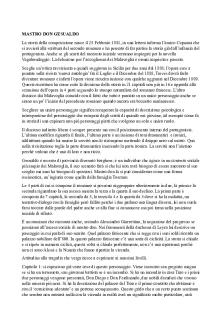831 Module 08 - don PDF

| Title | 831 Module 08 - don |
|---|---|
| Course | Leadership Development for Practice |
| Institution | Ryerson University |
| Pages | 3 |
| File Size | 83.1 KB |
| File Type | |
| Total Downloads | 62 |
| Total Views | 140 |
Summary
don...
Description
CNUR 831 Nursing: Leadership Development for Nursing Practice
1
Module 08 – Organizational Communication and Conflict Management Introduction Module 8 introduces two major concepts foundational to an understanding of leadership in nursing: communication and conflict management. The quote by Shein (2013) regarding “humble inquiry” is the first step toward better, more effective communication (p. 131). Topics and Learning Objectives The key concepts and key terms for this module are summarized Personal and interprofessional communication (p. 149-150) Conflict management (p. 353, bullets 8-12) By the end of this module you will be able to: Communication 1.Develop an awareness of personal communication strengths and areas for growth/development. 2. Apply communication theory in analyzing relationships in professional practice. 3.Discuss the effect of different communication patterns on interactions and outcomes. 4. Demonstrate professional online communication i.e. etiquette, privacy. 5. Identify strategies to support effective preceptor-preceptee relationships e.g. hopes/fears exercise. Conflict Resolution 1. Compare and contrast types of conflict. 2. Describe conflict management and negotiation strategies to manage workplace issues. Required Readings Kelly, P., & Quesnelle, H. (2016). Nursing leadership and management (3rd Canadian ed.) Toronto, ON: Nelson Education. Chapter 6, pp.131-146. Kelly, P., & Quesnelle, H. (2016). Nursing leadership and management (3rd Canadian ed.) Toronto, ON: Nelson Education. Chapter 15, pp. 345-356. Communication (Chapter 6, pp. 131-146) I Discuss the trends in Canadian society that affect communication (pp. 132-133) II III
Examine the elements in the communication process (Figure 6-1, p. 133) Why is it important to effectively communicate and coordinate transition in care? Compare and contrast the three channels of communication (pp. 133-134) Visual Auditory
CNUR 831 Nursing: Leadership Development for Nursing Practice
VI
2
Kinesthetic Compare and contrast the four modes of communication (pp. 134-136) Verbal Nonverbal Electronic Social media
V
Discuss the three levels of communication (p. 136-138) How are they similar and how are they different? Provide an example for each level. What is meant by the term “spheres of communication”? What skills are required for each sphere? How are these levels the same and different than “organizational communication”? (p. 138)
VI
Discuss in detail “communication skills” under the following headings (pp. 138140; Table 6-1, p. 139) Attending Responding Clarifying Confronting
VII
Examine barriers to communication under the following headings (pp. 140-143; Table 6-2, p. 143) Linguistically appropriate services Gender Culture Generational differences Health literacy Anger Incongruent responses Conflict
VIII
Discuss workplace communication in relation to the following statement (pp. 143146. “Nurses have diverse roles and relationships in the workplace that call for different communication patterns with superiors, co-workers, subordinates, [medication reconciliation], physicians, and other health care professionals, clients, families and mentors [and prodigy]” (p. 143).
Activity #1 – Read Case Study 6-1, p. 149. Referencing the material regarding communication, complete the questions related to the case study.
CNUR 831 Nursing: Leadership Development for Nursing Practice IX
3
Complete the review questions #1 to #5 (p. 150). Be sure to check your answers!
Conflict Management (Chapter 15, pp. 345-356) I
What is meant by the term “conflict”? (p. 345)
II
Discuss conflict under the following headings: (pp. 345-346) Sources (Table 15-5, p. 346) Types
III
Discuss the stages of the conflict process (pp. 346-347) Provide an example to help you remember each stage.
IV
Examine the disadvantages and advantages of conflict resolution techniques (pp. 347-349; Table 15-6, p. 348)
V
What are strategies to facilitate conflict resolution? (p. 349)
VI
Compare and contrast the roles of a leaders and a manager in the conflict management process (pp. 349-351)
VII
At what point/level would a manager/leader apply conflict management strategies? (pp. 351-352; Figure 15-4, p.351)
Activity #2 – Read Activity #2 in the course text (p. 354). Complete the questions that are asked. VIII
Complete the review questions #1 to #3 (p. 353). Be sure to check your answers!...
Similar Free PDFs

831 Module 08 - don
- 3 Pages

Module 08 - Lecture notes 8
- 3 Pages

GEO 1013 Module 08 INV
- 3 Pages

1331Syllabus Fall 08-08-19
- 9 Pages

Riassunto Libro Don Chisciotte
- 21 Pages

Riassunto Don Quijote
- 18 Pages

Introduccion a Don Quijote
- 19 Pages

Resumen don quijote
- 11 Pages

Mastro DON Gesualdo
- 10 Pages

capitulo 42 DON Quijote
- 7 Pages

DON JUAN Tenorio
- 7 Pages

Analisi prologo don chisciotte
- 4 Pages
Popular Institutions
- Tinajero National High School - Annex
- Politeknik Caltex Riau
- Yokohama City University
- SGT University
- University of Al-Qadisiyah
- Divine Word College of Vigan
- Techniek College Rotterdam
- Universidade de Santiago
- Universiti Teknologi MARA Cawangan Johor Kampus Pasir Gudang
- Poltekkes Kemenkes Yogyakarta
- Baguio City National High School
- Colegio san marcos
- preparatoria uno
- Centro de Bachillerato Tecnológico Industrial y de Servicios No. 107
- Dalian Maritime University
- Quang Trung Secondary School
- Colegio Tecnológico en Informática
- Corporación Regional de Educación Superior
- Grupo CEDVA
- Dar Al Uloom University
- Centro de Estudios Preuniversitarios de la Universidad Nacional de Ingeniería
- 上智大学
- Aakash International School, Nuna Majara
- San Felipe Neri Catholic School
- Kang Chiao International School - New Taipei City
- Misamis Occidental National High School
- Institución Educativa Escuela Normal Juan Ladrilleros
- Kolehiyo ng Pantukan
- Batanes State College
- Instituto Continental
- Sekolah Menengah Kejuruan Kesehatan Kaltara (Tarakan)
- Colegio de La Inmaculada Concepcion - Cebu



